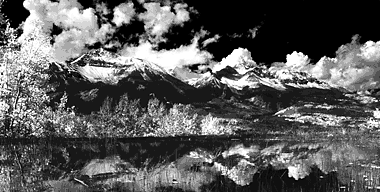breakthroughonskis.com
more than two decades of ski writing, ski teaching, and ski publishing by Lito Tejada-Flores
Ski Writing
The Home Mountains
Colorado’s San Juans
San Juan serendipity. A range full of silence and space. Summits and memories. Home. The home mountains.
When it comes to mountains, home is a matter of adoption not birth. Not an adoption you planned. You adopt a set of peaks and passes, hanging valleys and narrow canyons, because they’ve adopted you. Because each trip to the high country leaves you wanting more. Because there’s always more to want. Because the more your explore the more there is to discover. On skis or off, winter, summer, spring, fall. Fall is when the San Juans really get you, got me, when they slip past the white-on-white defenses of a skier’s heart and start layering colors and memories that will change your life.
Autumn creeps up the slopes of these San Juan Mountains one day, one contour line at a time. It starts with oakbrush in the lower canyons?driving up out of the sandstone deserts of the four-corners country toward the high country, holding your breath to see if the summits will already be white, already in early September. Oakbrush turning copper, rusty reds. Then cottonwood along the creeks, yellowing up, rustling and sighing in the wind as the first cold fronts cross the range. And then aspen, always aspen, groves, hillsides, whole mountains of aspen. A forest fire of yellow-orange aspen burning slowly up San Juan slopes toward a midnight sky, toward winter. Autumn gets all your senses. It smells of pinion, the first smoke from the first fires in newly cleaned chimneys. Autumn gets all your attention. Every day you wake to questions. Is the color still there ? Is it deeper? Did an overnight windstorm blow the last leaves away, strip the forests bare, clear the deck for winter?
You can’t wait for winter but you can’t bear to say goodbye to so much color, so much beauty. Storms come through right on track, right on time, and snowline creeps downward as the autumn reds move up. Any day now they’ll meet and explode, fire and ice, autumn and winter. Nowhere is the uncertain interface between two seasons as dramatic, as unpredictably spectacular as here in the San Juans when autumn and winter wrestle for control of the high country.
Winter always wins. Eventually snow puts out the last smoldering aspen fires, sends its occupying drifts marching across these mountains, prevails.
The San Juans are, geologically speaking, the youngest subrange of the Colorado Rockies which means, also geologically speaking, that they are the sharpest, the steepest, the most alpine?in a word, the wildest. The same volcanic action that tossed these mountains up brought veins of gold and silver right to the surface; and eventually brought miners here in the 1880s to start picking and chipping and blasting these mountains away long before wind and water could start wearing them down.
The early miners were tough but San Juan winters were tougher. A U. S. Geological Survey study tracks 88 separate avalanche disasters in the Telluride area alone from 1884 to 1924—mills, mines and machines, cabins and boarding houses swept away, and 58 fatalities. And Telluride was only one of a half dozen San Juan mining camps where men blasted, dug and died for gold. A tough country with tough winters. Today, two ski areas, Telluride and Purgatory, have tamed only a handful of runs, a handful of acres. The San Juans still have the highest avalanche hazard of any range in the Rockies, due to a combination of high altitude, steep slopes, early snow and early cold which converts innocent looking snow into Temprature-Gradient ball bearings that will lubricate late season avalanches. Like I said, the wildest mountains in Colorado. Respect them and live longer. Ski areas are small occupied forward outposts in the wilderness continent of a San Juan winter. But a mountain range is greater than the sum of its ski resorts. More tempting, more beautiful.
Here in the San Juans I’ve learned to turn a deaf ear to the siren song of midwinter couloirs just the other side of the boundary ropes, heavy with two feet of new powder, and innocent of explosives. It’s not too great a sacrifice. These peaks are so big, this range is so big, that when local areas close their lifts in April, ski season is really only half over. Spring tames the San Juan high country, gives it back to skiers, melts and freezes and remelts and refreezes the snow until it turns velvet and safe. The price of admission is no longer a lift ticket, but hours of uphill climbing, crampons on your feet, skis on your pack. The payoff changes too as San Juan spring cheers you down off its 13,000-foot passes and 14,000-foot peaks and out of its high cirques into forest glades, down old mining roads, past waterfalls melting out of winter’s icicle armor, past old mills and head frames and into another season.
You can’t believe its over, and actually it’s not. If you’re willing to climb you can still ski 3,000 feet off Mt. Wilson on the 4th of July; if you still want to race, you can sign up for the Lunar Cup slalom above Telluride, on the 4th of July. Or if you’ve finally had enough snow, made enough turns for one more year, you can eat barbecue at the volunteer firemen’s 4th of July picnic down in Telluride; then lie on the grass in the town park and watch fireworks exploding over the San Juans. Or hightail it out of town and lie on your back in the wildflower meadows of Yankee Boy Basin and watch the milky way exploding over the San Juans. Does it matter? No. You’re home. San Juan serendipity of another spinning year.
Click HERE to send Lito an email
